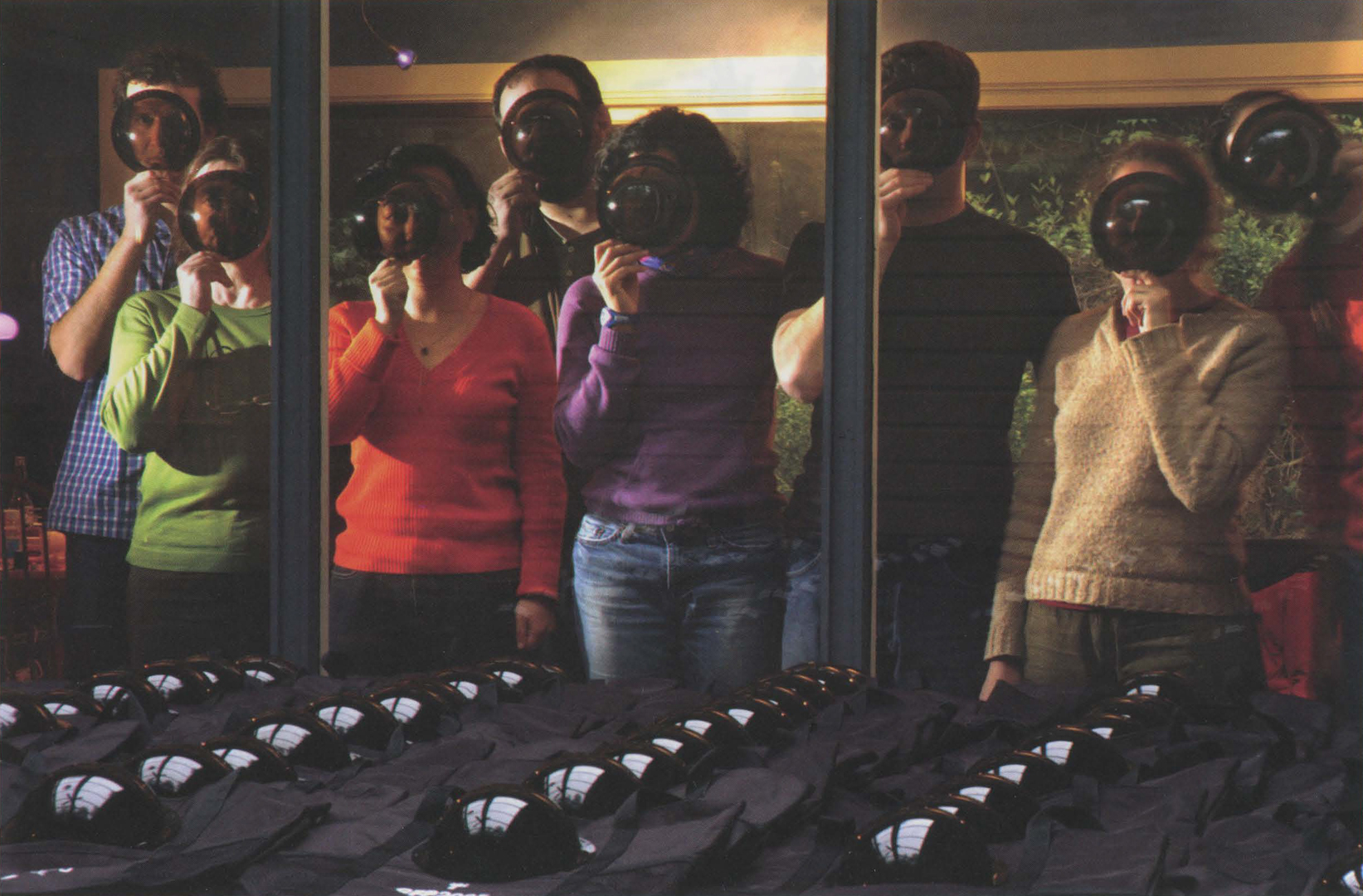Steve Mann: Cyber Glogger
Artist(s):
Collaborators:
Title:
- Cyber Glogger
Exhibition:
Creation Year:
- 2007
Category:
Artist Statement:
Camera phone images and video are used for social interaction. Constant mobile connectivity has become more than just encyclopedic “computer-like” knowledge, but rather is a tool
for greater understanding of the perspectives of others. P2P, often known as peer-to-peer, has become people-to-people, or “power-to-people,” instead of people-to-computer. Through the Global Eyes of camera phones, a new Globaleyesation results: all-seeing eyes, not in the traditional panoptic sense, but rather the inverse panoptic (SOUSveillance rather
than SURveillance). SOUSveillance supports selective self-representation, where people choose what they upload. With SOUSveillance, so long as you are alone, you are not being watched or observed. You are only being observed in social situations. SOUSveillance alters the power dynamic of traditionally disenfranchised communities, particularly in the developing world and indigenous communities, to establish a new relationship between the “ruled” and the “rulers.” There is a tension between SOUSveillers and SURveillers, creating a need for a fair balance: Equiveillance. This work examines the evolution of a social norm for image capture and tranmission. Attendees take part in SOUSveillance and negotiate, between phones, when and where image capture is desirable and what images should be shared. The work evolves throughout the duration of the conference, exploring how the community reaches a state of equilibrium: Equiveillance. NGOs often work in hostile environments that undermine existing civilian authorities’ efforts to promote humanitarian agendas. The arms race has become the information race and images the new ammunition. We propose a perpetual
stalemate in the form of Equiveillance. The accessibility of inexpensive off-the-shelf technology capable of transmitting live video and images brings about the democratic order of the new media militia. Constant connectivity with mobile imaging has applications for citizen journalism in environmentalism, micro-capitalism, and social-justice, empowering many communities by bringing their messages to the world stage.
Technical Information:
Attendees use their camera phones to participate in exploring the concepts of cooperative SOUSveillence throughout SIGGRAPH 2007. A camera phone program, called Glogger, allows conference attendees to either engage in the taking and sharing of images or prevent it.
Unlike other programs, Glogger must obey community standards to take or share images. This interaction is distributed, so no one person can stop or censor the process of image capture and sharing. This group interaction creates a mutually agreed upon “sight”-licensing scheme between users. Moreover, the system uses a continuous rather than binary sight-license permission to set image legibility. Sight-licensing provides different levels of image clarity so it may be apparent that someone is in an image, but not apparent who that
person is. Images are spread wirelessly between phones to be accepted or rejected. The community chooses the images that propagate further. This negotiation process evolves over time, perhaps reaching a state of Equiveillance. Globe-shaped SURveillance domes are re-situated, and attendees are invited to mount them on conference bags to create SOUSveillance eyes.





